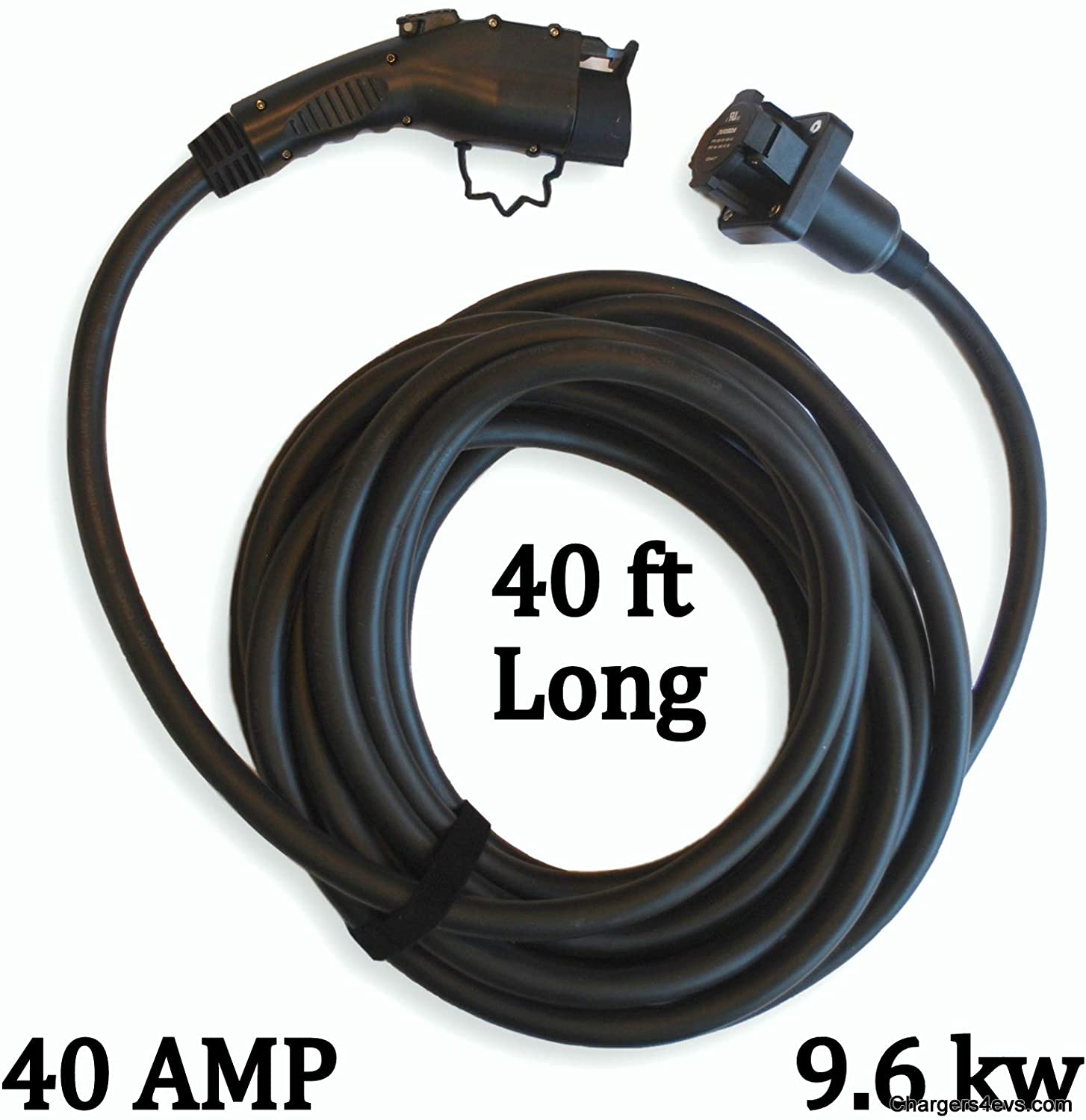Last Update: November 12, 2019
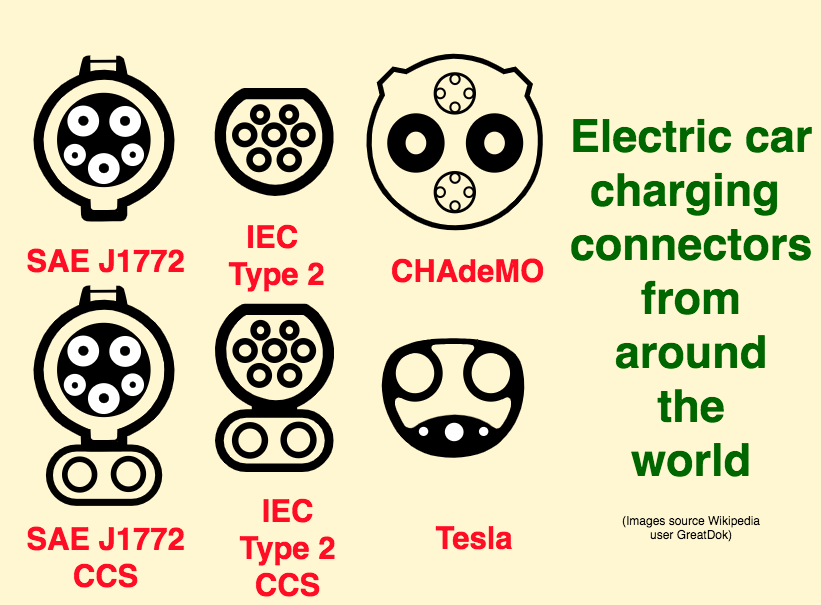
We used to have a problem with electronics devices where each device would have a unique power/charging connector. Lord help you if you lost the charger that came with the device, because the best hope for getting a replacement charger is the possibly dodgy sellers on eBay. USB charging has become the solution to that problem, because USB charging equipment is fairly well standardized and is readily purchasable.
Fortunately electric car charging is not so chaotic as was the situation for portable consumer electronics. There's only a few charging plugs to learn about, and they cannot be lost because they're built-in to the car.
Ideally this question would be answered with "yes": Are all electric vehicle charging stations compatible with all makes of electric vehicles? While the answer is yes for most cases, these specific scenarios require special considerations:
| Question | Discussion |
|---|---|
| Can a non-Tesla car use Tesla destination charging stations? | In North America this requires a special adapter. In Europe, and Australia, yes. |
| Can a non-Tesla car use Tesla supercharger stations? | No |
| Can a Tesla car use AC level 2 public charging stations? | Yes, in all markets Tesla supplies an adapter. |
| Can a Tesla car use CHAdeMO public charging stations? | Yes, if the car owner buys a CHAdeMO adapter. |
| Can a Tesla car use Combo Charging System public charging stations? | Yes, by using the CCS adapter. |
The key to determining if a given charging station is compatible with your car is comparing the shape of the charging plug versus the shape of the charging socket on your electric car. If the plug doesn't fit you can't charge - to paraphrase a famous statement from the OJ Simpson trial.
Broadly speaking compatibility between types of charging stations is: For AC Level 2, every electric car can use the charging stations with a standard charging connector. Tesla cars in North America require an adapter to use J1772 charging stations, but in Europe, New Zealand, and Australia, Tesla cars use standard charging plugs. Non-Tesla cars generally cannot use the Tesla Destination Chargers, unless the owner has bought an adapter. In Europe, New Zealand, and Australia, non-Tesla cars can use Tesla destination chargers. For Supercharger stations, non-Tesla cars are simply prohibited, even in Europe where the Supercharger stations use CCS plugs. For CHAdeMO and Combo Charging System (CCS) stations, the non-Tesla cars can only use the variety which they're compatible with. For the Tesla cars, Tesla sells adapters for both CHAdeMO and CCS. China is its own universe of charging connectors and standards.
Terminology
An EVSE, or Electric Vehicle Service Equipment, is what we also call a Charging Station.
Level 1, Level 2, etc: Many folks got accustomed to calling "level 1 charging" the 120 volt charging used in the USA, "level 2 charging" the single phase AC charging at about 6 kiloWatts that's available worldwide, and "level 3 charging" the DC fast charging systems. But those labels have partly been abandoned, since "level 3" doesn't exist any longer, and we should all probably stop using those labels anyway. See Charging levels - Level 1, Level 2, DC Fast Charging, etc
AC Versus DC: In AC charging, an on-board charging unit converts AC current from the charging station into the DC current required to charge the battery pack. We don't normally need to think about the on-board charging unit since it's buried inside the car. The advantage of AC charging is recharging at any available electricity outlet. There are charging stations small enough to be carried at all times, letting any power outlet be your recharging source.
See also:
- Charging levels - Level 1, Level 2, DC Fast Charging, etc to learn the categorization (Level 1, Level 2, etc) of charging rates.
- EV DC Fast Charging standards – CHAdeMO, CCS, SAE Combo, Tesla Supercharger, etc for comprehensive details of all fast charging systems
Connectors: IEC versus SAE versus Tesla versus CHAdeMO
On this page we are looking at every electric vehicle charging connector of significance around the world. The page is very long, and there are a lot of charging connectors. It may simplify to recognize there are two main charing connectors that are the basis for most of the other charging connectors in use. Then there is a pair of charging connectors from Tesla and the CHAdeMO Alliance.
| Charging plug | Organization |
|---|---|
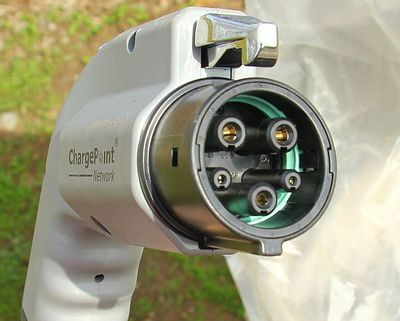 |
Society for Automotive Engineers (SAE) developed the SAE J1772 connector. That connector is actively in use in North America and Japan, and was used for some times in several other regions. |

|
International Electrotechnical Commission (IEC) took some aspects of the J1772 design, but developed this other plug (IEC Type 2) because it can directly support 3-phase AC and DC charging. Initially this plug was in use in Europe, but other countries are adopting this plug. |
Both of these are the base charging connector for the named regions. Primarily these connectors handle AC charging. Both of those were also used as the basis for a high power DC charging system called the Combo Charging System (CCS). Combo 1 is based on the SAE J1772 connector, and Combo 2 is based on the IEC Type 2 connector.
Most of the world is moving to adopt the IEC Type 2 connector as the basis for EV charging connectors. Even Tesla which uses a proprietary charging connector in North America has adopted the Type 2 connector in other regions. And in China, which is its own universe of charging connectors, has used the shape of the IEC Type 2 connector, but implemented it differently.
There are two charging connectors which do not fit that neat story:
- CHAdeMO was the first DC fast charging system being initially deployed in 2008 in Japan. It is used around the world but is most associated with electric cars from Japan (e.g. the Nissan Leaf).
- Tesla's Supercharger connector in North America is a nicely designed, sleek, connector that supports an amazing array of uses. But it is proprietary to Tesla, and Tesla owners must use adapters to use any non-Tesla charging system. In other regions Tesla has adopted other charging connectors like the IEC Type 2.
North America - AC Level 1 and AC Level 2 charging - SAE J1772
In at least North America and Japan this charging connector is used for AC Level 1 and AC Level 2 charging. That means it supports single-phase AC charging at up to 19 kiloWatts, meaning 240 volts AC at 80 amps. In practice, while Clipper Creek sells a charging station supporting this rate, no car manufacturers has implemented a 19 kiloWatt AC charging system.

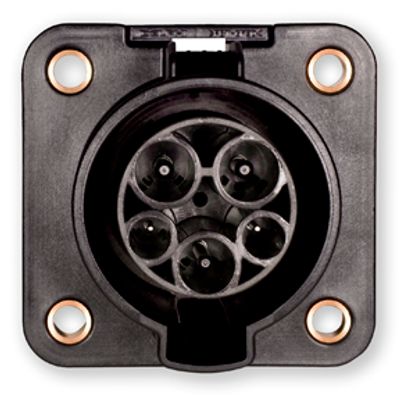
Compatibility with Tesla cars: While Tesla's electric cars have a proprietary charging connector, Tesla provides a J1772 adapter plug so that Tesla's EV's can use J1772 charging stations.
The SAE J1772 committee operates under the umbrella of the Society for Automotive Engineers (SAE) and concerns itself with electric car charging connectors. In addition to the connector shown here, the J1772 committee also designed the Combo Charging System that's talked about in a later section.
The J1772 charging protocol is also used in Europe, New Zealand, and Australia, but through a different charging connector (see below). Namely, the International Electrotechnical Commission (IEC) has a committee defining charging connectors for electric vehicles. IEC 62196 is the corresponding committee to SAE J1772, and as a result the SAE J1772 charging connector is also known as the IEC 62196 Type 1 connector.
Typical AC Level 1 - line-cord charging station, 1.2-1.5 kiloWatts
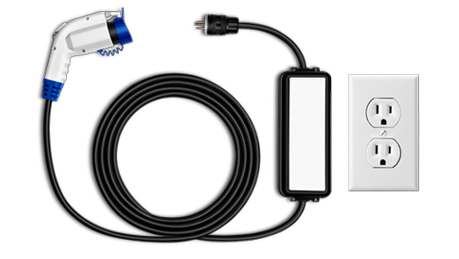
Every electric car is sold with a small charger that's light and easy to carry around. In North America typically these charging units run on 120 volts at up to 12 amps, providing a very slow charging rate. Because they plug into normal power outlets it means an EV driver can recharge their car (slowly) anywhere there is electricity. The automakers mean for these to be a "last resort" charging solution, and that normally we'd use Level 2 EVSE's. In practice many people use these as their primary charging station.
Typical AC Level 2 electric car charging stations, 3 kW, 6 kW, and more


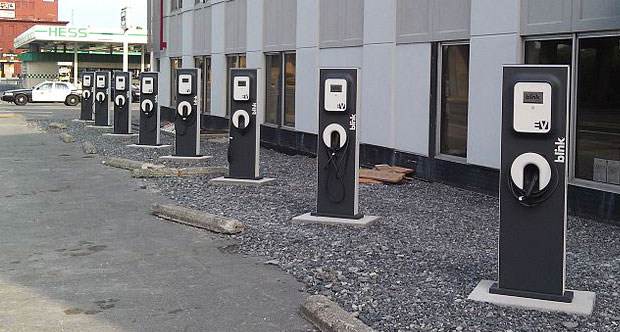
AC Level 2 charging stations run at a higher power level providing quicker charging. Most often it's a 240 volt 32 amp charging rate for about 6 kiloWatts, but some car makers and some charging stations support higher charging rates. These charging stations are used both at home and in the public.
Home charging stations are usually not connected to a network, but are simply connected to the household electricity just like any other appliance. A home-based charging station will require some installation planning. While installation is not more complex than installing a clothes dryer, it may require upgrading the home service panel to have enough electrical capacity. See How to plan for and install 240 volt circuit to charge an electric car/vehicle?
Public charging stations are typically available for anyone to use. These typically collect a usage fee for each use, typically through a charging network membership. There are several charging networks each of which require an identification card and to set up membership ahead of time. See Known electric car charging networks around the world
Some public charging stations are not for the general public but, for example, only for employees of a given company. For example they might be in a parking area that only employees can access, or employees might be given an identification card.
Some public charging stations are free - as in zero cost to use. For example a non-profit organization may feel their mission of service includes offering free charging. Or a grocery store might entice customers to spend more time in the store by offering charging. See How do I pay for energy consumed in charging my electric vehicle?
It's usually recommended that Level 2 stations be hard-wired to a junction box that's in turn hard-wired to a service panel. They would then be physically mounted to a wall, or on a pedestal, or mounted on a concrete slab, and to be part of the physical infrastructure.
AC Level 2 Charging in Europe, New Zealand, and Australia - IEC 62196 Type 2 charging connector
We said earlier that the SAE J1772 connector is not used in Europe. In some areas, like Europe or New Zealand or Australia, the SAE J1772 plug was used for a time, but the country is transitioning to the IEC Type 2 plug instead. The J1772 charging protocol is used, just through a different connector in those countries.
In Europe, the charging connector standards are derived from the IEC 62196 committee. And the IEC 62196 Type 2 connector is explicitly required in European Union regulations. Some countries outside Europe, like Australia or New Zealand, also use the same standard.
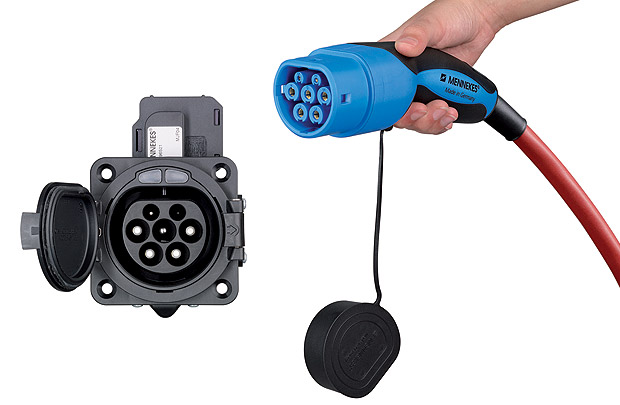
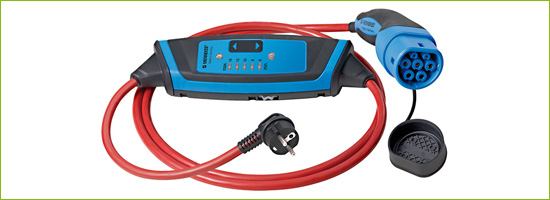
The Type 2 connector is round, with a flat side to aid with physical orientation. This plug shape was originally proposed by Mennekes in 2009, hence it is often called by this name. As we see below, while it supports the single phase AC charging we just discussed with the SAE J1772 plug, the IEC Type 2 plug supports much more.
In Europe, New Zealand, and Australia there were previously other charging connectors in use including the SAE J1772 connector, where it is called the Type 1 connector. The Type 2 connector is meant to supplant the J1772 connector.
The line cord charger shown here supports single phase AC, at 240 volts, at up to 13 amps, and plugs into a "Schuko" outlet that is commonly used in mainland Europe. Hence this charging unit supports a 3 kiloWatt charging rate. In Australia similar chargers do not have the Schuko plug, but the plug appropriate for Australia.
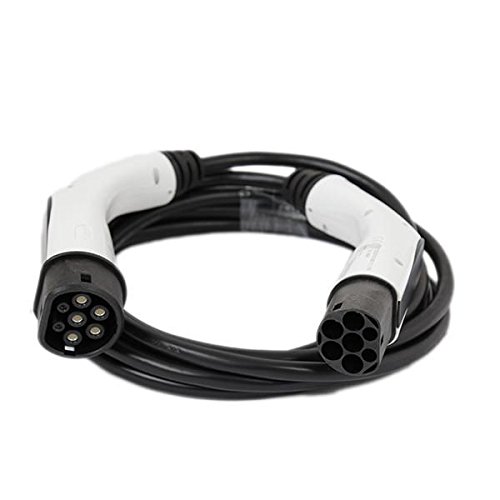
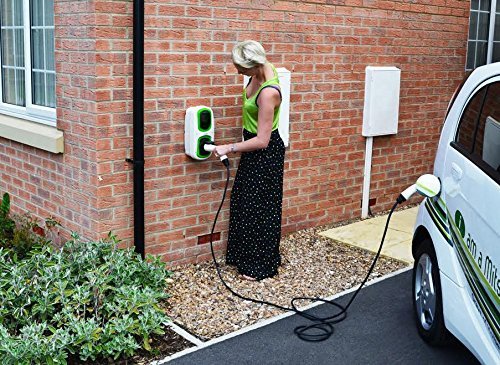
In Europe, New Zealand, and Australia, some charging stations have a built-in charging cord. At other charging stations there is instead a socket, and the driver is required to bring their own charging cord. These type 2 to type 2 cables are used for the latter sort of charging station.
The sharp eyed will notice the Type 2 connector has seven pins while the SAE J1772 (Type 1) connector has only five pins.
The extra pins are used for different operating modes. The SAE J1772 plug only supports single phase AC charging. Because three phase AC is widely available in Europe the IEC Type 2 plug supports that as well as the other modes shown in this chart:

What this chart shows is several modes for using the Type 2 connector. To aid decoding, "dreiphasig" means "three phase", the word "oder" means "or". Translated this describes:
- Single phase AC at up to 500 volts AC and up to 80 amps
- Three phase AC at up to 500 volts AC and up to 63 amps per phase
- Low power DC charging at up to 500 volts DC and up to 80 amps
- Mid-power DC charging at up to 500 volts DC and up to 140 amps
- High-power DC charging above 500 volts DC and up to 200 amps; This mode involves two separate pins for DC that we'll go over later with the Combo Charging System
Compatibility: Essentially every electric car sold in Europe, New Zealand, and Australia has either the simple Type 2 inlet shown here, or the Combo Charging System inlet.
Compatibility of IEC Type 2 with IEC Type 1 cars (J1772): In Europe, New Zealand, and Australia some cars were sold with the SAE J1772 charging port, which is also called the IEC Type 1 port. For such a car to use an IEC Type 2 charging station requires a Type 1 to Type 2 charging cable.
Compatibility of IEC Type 2 with Tesla: Tesla began using the Type 2 inlet some years ago in the Model S and Model X. Initially the Supercharger DC fast charging system used the Type 2 inlet by implementing one of the DC modes shown above. The Tesla Model 3, on the other hand, has a Combo Charging System inlet. As a result Tesla is converting Supercharger stations in Europe and elsewhere to use CCS connectors, and supplying CCS adapters to Model S and Model X owners.
Tesla Universal Mobile Connector
The Universal Mobile Connector is Tesla's light-weight line-cord charger. Pictured here is the version for North America with the Tesla-proprietary charging connector.
At the other end of the UMC, it supports a wide range of adapters matching different power outlets. The adapters are keyed so that the UMC automatically knows the maximum charging rate to use.
Unlike typical line-cord chargers, the UMC supports up to a 9 kiloWatts charging rate.
In Europe, New Zealand, and Australia the UMC instead has an IEC Type 2 plug on one end, and supports a variety of adapter plugs suitable for European power outlets.
This video on YouTube goes over all adapters available for the European UMC
Compatibility with various power outlets: Tesla designed an ingenious system of adapters supporting every power outlet, and automatically informing the car what the maximum charging rate is. The car has to constrain the charging rate to the maximum allowed by the power outlet, or risk blowing a circuit breaker or worse.
Compatibility with SAE J1772 cars: The North America UMC does not directly support use with cars having J1772 ports. Of course Tesla does not intend to supply this charger for non-Tesla cars. However some 3rd party companies offer a conversion of the UMC replacing the charging cord with one having a J1772 connector.
Compatibility with IEC Type 2 cars: Because the Europe, New Zealand, and Australia version of the UMC supports the Type 2 plug, it can immediately be used with non-Tesla cars having Type 2 charging ports.
Tesla Wall Connector, Destination Chargers, AC Level 2, up to 11.2 kiloWatts

In addition to supplying a mobile charging unit with every Tesla car, the company also sells the Tesla Wall Connector. The Wall Connector is a charging station that handles single phase or three phase AC charging at up to 11.2 kiloWatts. Supporting the maximum charging current requires a 100A circuit dedicated to the Wall Connector. In case you cannot dedicate that much electrical capacity to your car, a switch inside the box configures the maximum charging current.
In North America the Wall Connector uses Tesla's proprietary charging connector. It only supports single phase AC charging.
In Europe, New Zealand, and Australia it uses the IEC type 2 connector to match the charging port. Going by the installation manual, it appears the European, New Zealandian, and Australian version supports 3 phase AC charging.

Tesla Destination Chargers: The Tesla Destination Charger network is located, as the name implies, at "Destinations" meaning stores or restaurants or workplaces or hotels. A Tesla "partner" site will install one of these to draw visits from Tesla owners.
The Destination chargers offer AC charging, while Tesla Supercharger locations offer DC charging.
The Tesla Destination Charger is either identical to, or nearly identical to, the Tesla Wall Connector.
Compatibility with J1772 cars in North America: In North America, since the Wall Connector uses the Tesla-proprietary charging plug, non-Tesla cars cannot use it, nor can non-Tesla cars use the Destination chargers. However there are at least two adapters available allowing a SAE J1772 car to charge using a Wall Connector or Destination Charger.
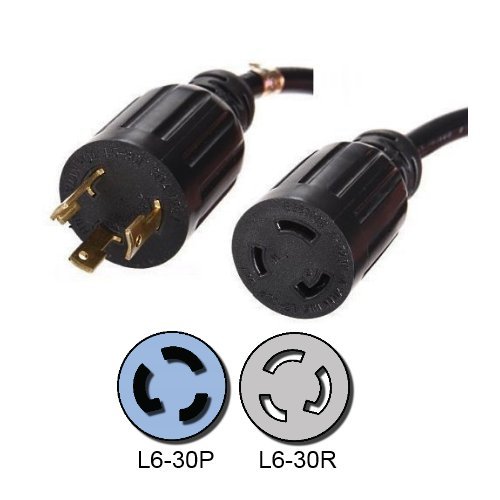
![AC WORKS [S1450620-012] 1FT STW 10/3 RV/Range/Generator 14-50P 50Amp Plug to 6-20R 15/20Amp 250Volt Adapter AC WORKS [S1450620-012] 1FT STW 10/3 RV/Range/Generator 14-50P 50Amp Plug to 6-20R 15/20Amp 250Volt Adapter](../../../___dlassets/images-na_ssl-images-amazon_com/images/I/71isC-Z6C6L._SL1500_.jpg)
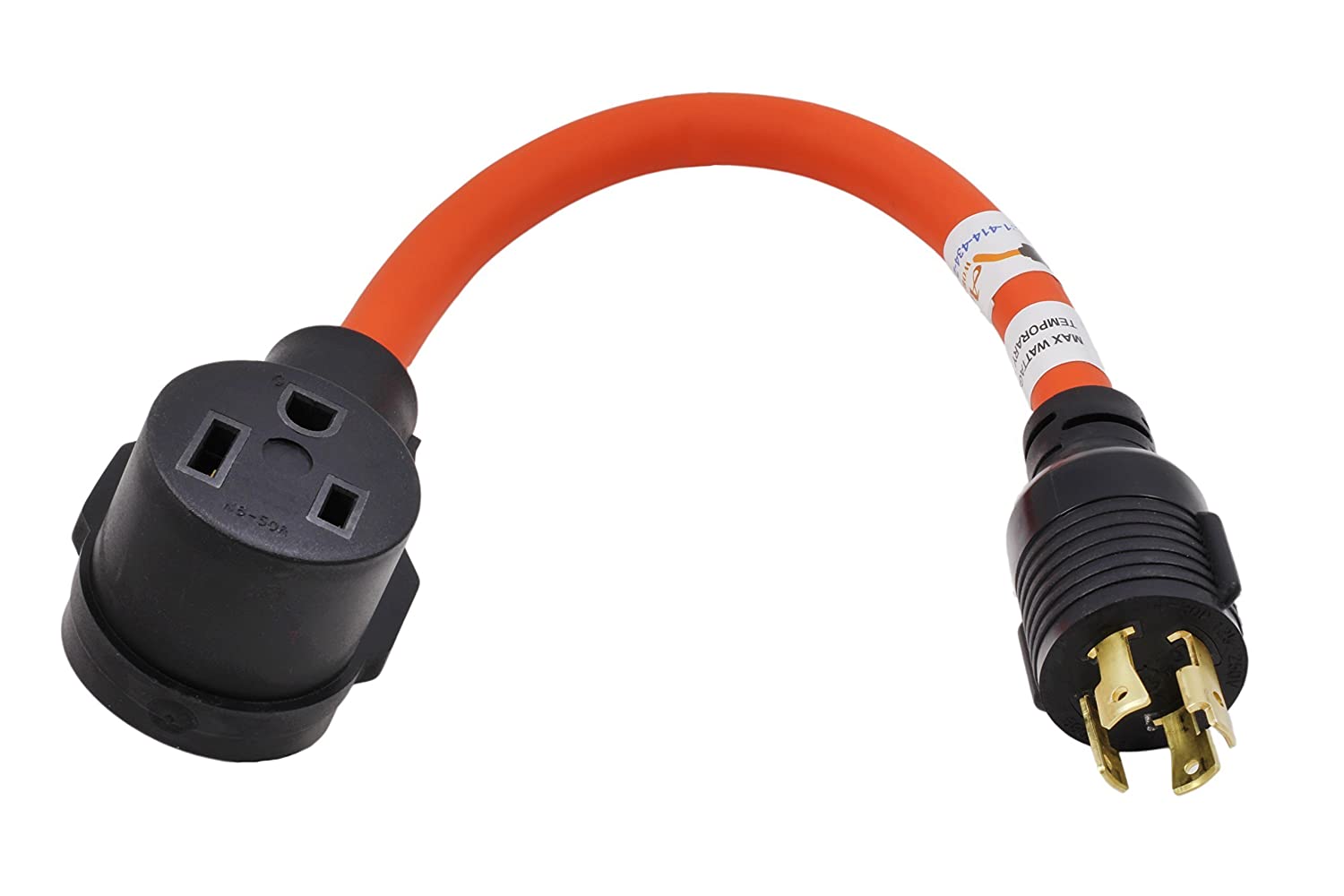



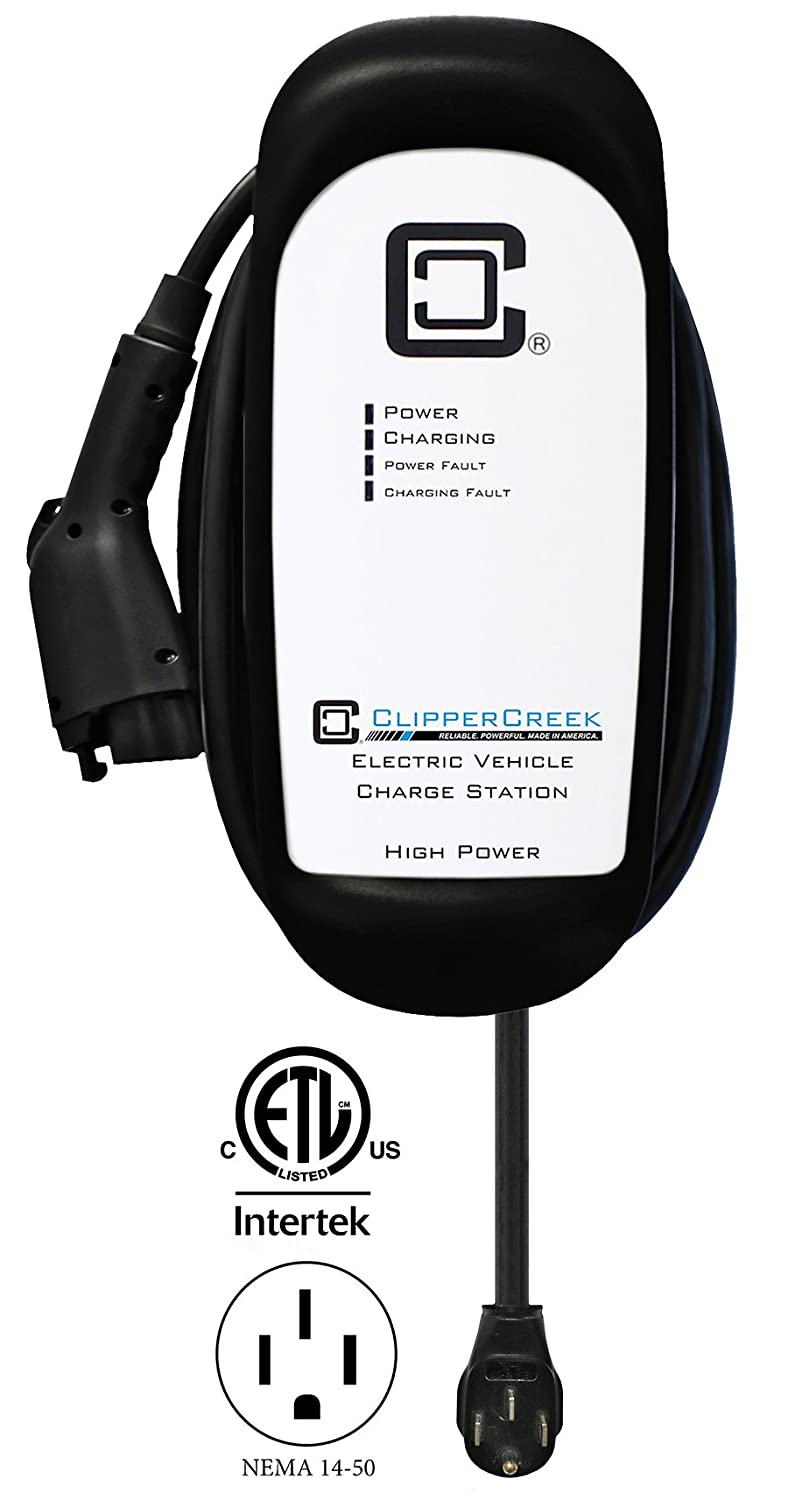
Compatibility with IEC Type 2 cars in Europe, New Zealand and Australia: This theory appears to be correct, that since the Wall Connector and Destination Chargers in Europe, New Zealand, and Australia use an IEC Type 2 plug, an IEC Type 2 car can freely use Tesla Destination Chargers.
DC Fast Charging, level 1, level 2, level 3
To reiterate, the labels "level 1" for AC 120 volt charging, "level 2" for AC 240 volt charging, and "level 3" for DC fast charging are incorrect. Instead there are AC levels 1 through 3, and DC levels 1 through 3.
In these sections we will talk about DC charging.
In DC charging the conversion from AC to DC is performed by the charging station. The advantage of DC charging is it can easily sustain tremendously high charge rates because the high-power circuits are not on-board the car. Instead the on-board charging circuit is essentially straight to the battery pack, along with protection circuits.
- DC Level 1: 200-450 volts DC up to 36 kiloWatts (80A) - Note there is almost zero implementation of DC level 1.
- DC Level 2: 200-450 volts DC up to 90 kiloWatts (200A)
- DC Level 3: 200-600 volts DC up to 240 kiloWatts (400A)
A large portion of the public CHAdeMO and Combo Charging System stations run at 50 kiloWatts, and are therefore DC Level 2. Starting in 2019, the charging networks are starting to upgrade to higher charging rates, in some cases 150 kiloWatts, or 250 kiloWatts, and in at least one case 350 kiloWatts.
CHAdeMO DC Level 2/3 Fast Charging for electric cars
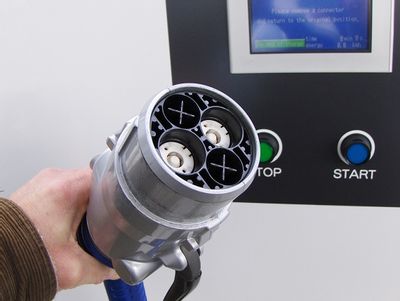
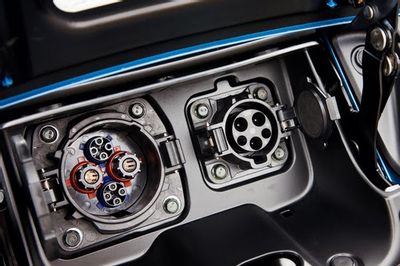
This is the CHAdeMO charging plug and socket. CHAdeMO was designed in Japan by TEPCO (Tokyo Electric Power Company). Its first deployment was in 2008, making it the first DC fast charging system. According to the CHAdeMO Association website, over 25,000 CHAdeMO stations have been installed worldwide as of December 2015. Typical stations support rates up 50 kiloWatts, however CHAdeMO stations with a higher rate are starting to be available.
CHAdeMO's design does not integrate with the Level 2 charging socket. Therefore the car must support two charging ports, one for AC Level 2 in addition to the CHAdeMO port.
Because CHAdeMO was designed in Japan, it is primarily used by Japanese automakers. The best known CHAdeMO proponent is Nissan, whose Nissan Leaf sported a CHAdeMO port from the beginning. Until the 2019 model year the Kia Soul EV had a CHAdeMO port, despite being made by a Korean automaker. Starting in 2020, Kia switched to the Combo Charging System.
CHAdeMO's future is uncertain because the SAE designed a different fast charging protocol. A large contingent of automakers have announced support for CCS (see below), seeming to suggest the auto industry will ultimately settle on CCS for DC Fast Charging.
Compatibility: The CHAdeMO port is the same in all regions where it is used. Therefore, any car with a CHAdeMO port can use any CHAdeMO charging station.
Compatibility of CHAdeMO with Combo Charging System: Cars with Combo Charging System or Supercharger ports obviously cannot use a CHAdeMO charging station. As we see in a little while, most charging station manufacturers support both CCS and CHAdeMO in the same station.
Compatibility of CHAdeMO with Tesla cars: Tesla sells an adapter allowing Tesla cars to use CHAdeMO charging stations.
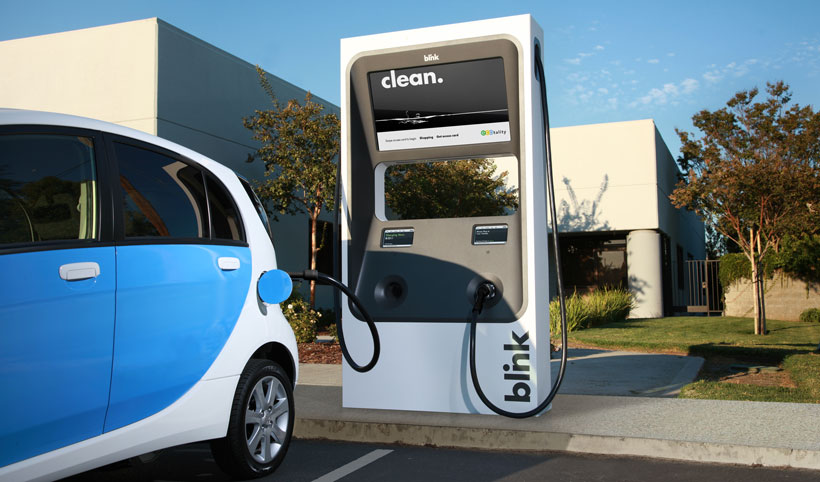

Combined Charging System (CCS) DC Level 2/3 fast charging for electric cars

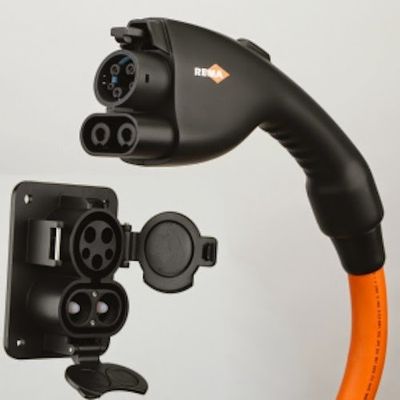
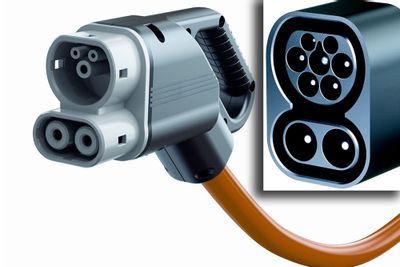
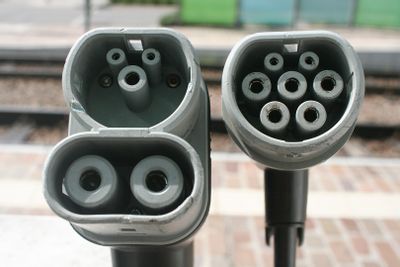
The Combined Charging System (a.k.a. Combo Charging System, a.k.a. CCS) is a DC fast charging system developed by the SAE J1772 committee. There are two variations of the CCS connector:
- Combo 1 Was derived from the SAE J1772 plug
- Combo 2 Was derived from the IEC Type 2 plug
In both cases two extra pins are added, with the DC charging current carried on those pins. Where the CHAdeMO charging plug is not integrated with the AC charging plug, with CCS they are integrated.
One reason the SAE J1772 committee gave for developing CCS (as opposed to adopting CHAdeMO) was to limit the car to one charging port. With CHAdeMO an electric car has two charging ports, one for AC charging and the other for DC charging. With CCS there is one charging port that works for both AC and DC charging.

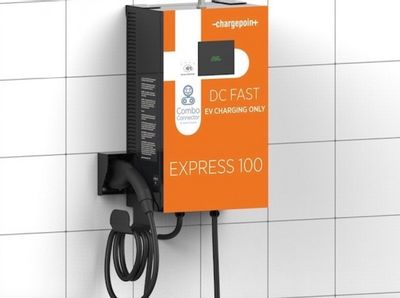
This charging station is one of the few examples of a DC Level 1 charging station, due to supporting a 25 kiloWatts maximum charging rate. It can be installable in places other higher-power charging cannot go. However at only 25 kiloWatts the charging rate is not as fast as it could be. [BMWCP]
Like for CHAdeMO, typical CCS stations support a 50 kiloWatt charging rate. In recent years this is changing, with charging rates from 150 to 350 kiloWatts being installed in some places. [CCShiPower] [AudiHiPower]
Compatibility: There are two types of CCS connectors. But this is not a problem since they are based on the continent the car is sold on.
Compatibility of CCS with CHAdeMO: The CCS and CHAdeMO plugs are obviously physically incompatible. The two charging protocols are also very different which would make it challenging to develop an adapter between the two. However, as we see in the next section most charging station makers support both CCS and CHAdeMO in the same station.
Compatibility of CCS with Tesla: As with CHAdeMO, the CCS charging plug is incompatible with most of Tesla's cars. In North America, Tesla uses its proprietary Supercharger connector which is incompatible with the CCS Combo 1 plug. Tesla does not make a CCS adapter for North America. In Europe, New Zealand, and Australia, Tesla initially used an IEC Type 2 plug (not Combo 2) for the Model S and Model X and on the Supercharger stations. The European, New Zealandian, and Australian version of the Tesla Model 3 uses a CCS Combo 2 plug, making it directly compatible with CCS charging stations in Europe, New Zealand, and Australia. As a result Tesla is converting European, New Zealandian, and Australian Supercharger stations to use CCS plugs.
Dual protocol charging stations supporting both CHAdeMO and CCS
In theory the incompatibility between CHAdeMO and CCS charging systems would complicate electric car ownership. Since CHAdeMO, CCS and Tesla systems are not interoperable, that splits the charging market into three camps. Fortunately most non-Tesla fast charging stations are dual-protocol supporting at least CHAdeMO and CCS in the same charging station. So in practice the charging market is only split into two camps: Non-Tesla and Tesla.
The user experience is similar to gasoline stations with multiple fueling nozzles. A diesel car owner knows to use the diesel hose, an ethanol car owner knows to use the ethanol hose, and a gasoline car owner knows to use the gasoline hose. The nozzle in each case is different enough to make it incredibly difficult to make a mistake. Humans being humans there probably are mistakes made, with occasional ruined engines as a result.
For EV charging the charging plug for each system is obviously different enough that a mistake is impossible. But the same idea holds, in that a multi-protocol charging station has multiple charging cords, one for each charging system. The car owner simply uses the cord suitable for their car.
Among the reasons the J1772 committee developed CCS are
- Single charging inlet to support slow and fast charging (versus two required for CHAdeMO)
- Use smart grid protocols to control charging
- Same connector serves multiple purposes
However, CHAdeMO is widely deployed and certain automakers are not backing away from supporting that protocol. Therefore the electric car market will continue being split between DC Fast Charging systems. To mitigate this problem the charging station manufacturers have made dual-protocol stations supporting both CHAdeMO and CCS.
Here are some examples of multi-protocol charging stations

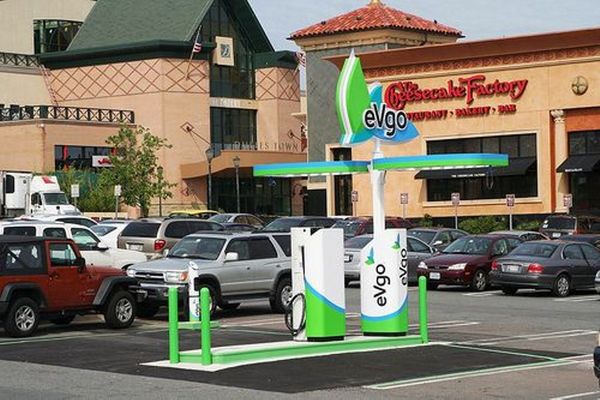

Tesla Motors Supercharger, DC Level 2/3 fast charging

This is Tesla's North American Supercharger charging cord. Through one slim, light weight, easy-to-use connector, Tesla Motors supports single phase AC charging up to 20 kiloWatts, and DC Fast Charging up to 120 kiloWatts.
Tesla began installing the Supercharger system in 2013. At that time the Combined Charging System had been announced, but no compatible charging stations were available, leaving CHAdeMO as the only example of DC fast charging. Tesla CEO Elon Musk said they didn't like the styling or user experience of either system (both are ungainly), and therefore went with their own design.
However, there is a practical technical reason Tesla Motors could not just adopt CHAdeMO or CCS. Tesla's long range electric cars need a much higher charging rate than 50 kiloWatts, the typical charging rate for non-Tesla DC fast charging. To Tesla, 50 kiloWatts is slow charging, and even 120 kiloWatts is not fast enough.
Compatibility with CHAdeMO or CCS cars: The Tesla Supercharger network is not available for non-Tesla cars. In North America the charging connector is simply not compatible with anything but Tesla cars. In Europe, New Zealand, and Australia the charging connector is the Combo 2 connector based on the IEC Type 2 connector, however an authentication protocol prevents it from being used by non-Tesla cars.

Each Supercharger location has multiple stations, each of which runs at up to 120 kiloWatts charging rate. This is fast enough to provide a full recharge in about an hour, or about 300 miles of range per hour of charging.
Supercharger locations are being built along major highways and are primarily located at existing refueling locations.

In more urban settings the Supercharger stations look like this.

In Europe, New Zealand, and Australia, Tesla has adopted the IEC Type 2 connector for charging. As noted in the chart presented earlier, this connector supports not only single-phase and three-phase AC charging, but it also supports DC fast charging.
The Tesla Model 3, however, supports the Combo 2 plug, which is the IEC Type 2 plug with two additional DC charging pins.
For the Tesla Model S and Model X, beginning in May 2019 those cars are supplied with a Combo 2 adapter.
Charging in China
China is the largest car market in the world, and is isolated enough it can set its own standards. For years charging standards in China were in flux, with several ideas being explored.
The relevant standard is GB/T 20234.2. There is a 2011 version of GB/T 20234.2, and a 2015 version. The following comes from the 2011 version.
AC Charging in China (GB/T 20234.2-2011)
The GB/T 20234.2 AC charging connector is physically the same as the IEC Type 2 connector. But, in China it is gender-reversed. The specification requires cables with Type 2-style male connectors on both ends, and a female inlet on vehicles. This is the opposite of every other country.

This image shows the Tesla Model 3 charging ports on the first cars Tesla built in China. It is the first Tesla car with more than one charging port. To the left is the GB/T 20234.2 charging connector that's used for AC charging.
Refer back to the IEC Type 2 charging ports shown earlier. It's the same outline but opposite to what's used in Europe.

This is the UMC that Tesla sells in China for the Model 3. It clearly comes with a couple power adapters, and uses a charging plug with the same shape as the IEC Type 2 plug, but the opposite gender.
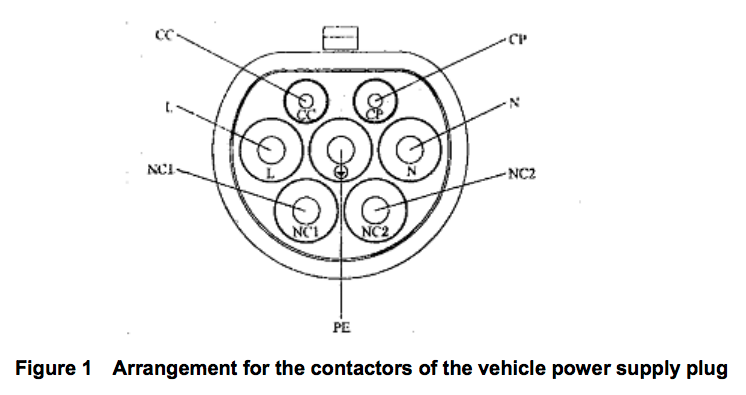
This diagram comes from the GB/T 20234.2 -2011 (see link below) and describes how AC charging is handled in China. What this means is China only uses the single phase AC portion of what the IEC Type 2 connector can do. Two of the connectors that are available are simply unused.
While the IEC Type 2 connector supports single phase AC, three phase AC and DC charging, GB/T 20234.2 only supports single phase AC.
DC Charging in China (GB/T 20234.3-2011)

The left-hand port in this picture handles AC charging, as we just discussed. The right-hand port handles DC charging, and this is documented in GB/T 20234.3 -2011 (see link below).

The port looks somewhat like a CHAdeMO port, but it is a GB/T specific port. Look close and you see there is significant differences between this and CHAdeMO. For what it is worth,
China and the CHAdeMO Association announced a partnership in which ultra-fast CHAdeMO would be developed for use in China and Japan. Further the alliance would also promote the new ultra-fast CHAdeMO for use in other countries.
This means that Tesla cars in China are compatible with China's GB/T 20234.3 charging stations. In January
Inside EV's showed a picture of Supercharger stations in China with GB/T connector;

We see that, as expected, the two large pins are for DC connections. The middle pin in the bottom row is for the ground connection. The two pins labeled CC1 and CC2 are for controlling the charging connection. The two lines S- and S+ are used to communicate other control information. They use CANBUS as the control protocol, as is done in CHAdeMO. Finally the A+ and A- lines are for accessory power.
Links to GB/T 20234 standards documents
-
GB/T 20234.1-2011 Connection set of Conductive Charging for Electric Vehicles--- Part I: General Requirements
-
GB/T 20234.2 -2011 Connection set for conductive charging of electric vehicles— Part 2: AC charging coupler
-
GB/T 20234.3 -2011 Connection set for conductive charging of electric vehicles— Part 3: DC charging coupler
Historical electric car charging systems (AVCON and MagneCharge)
In the previous wave of electric cars - when GM's EV1 was king - two charging systems competed for dominance. Having two systems was painful, and we all supposedly learned to avoid that pain and stick to one charging system. Obviously that lesson got lost somewhere along the way.
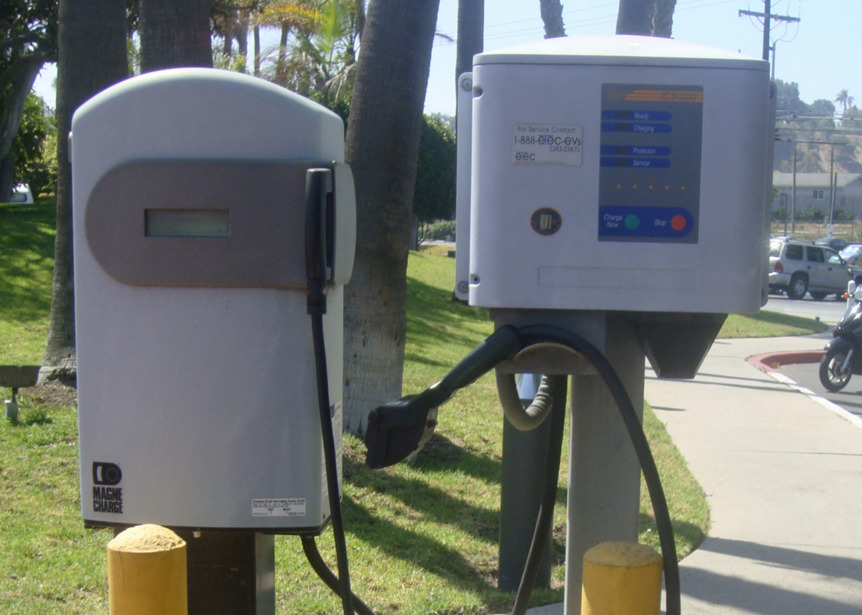
On the left is an inductive charger made by MagneCharge. This was used on the GM EV1 and some other cars. On the right is a conductive charger, with a claw-shaped charging plug, made by AVCON.
The AVCON charging station formed the basis of the J1772 charging protocol. Using a suitable adapter, current electric cars can charge using an old AVCON station.

